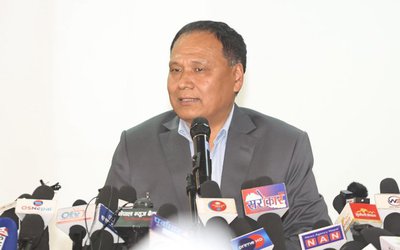Nepal ranks as the 4th most climate-vulnerable country in the world and is highly exposed to a range of water related hazards such as floods, droughts and landslides. Current projections predict increased climate variability and increased frequency and higher intensity of extreme events. These hazards pose enormous costs to Nepal’s economy and an estimated one percent of the country’s Gross Domestic Product (GDP) is lost to natural disasters consisting of frequent events such as floods and landslides. Poor and rural populations including women tend to be the most vulnerable to such risks. In the climate sensitive agricultural sector, farmers need timely information on weather and climate variability to adjust their farming practices and minimize adverse impacts on rural livelihoods, agricultural productivity and food security.
The Government of Nepal has officially started implementation of the Building Resilience to Climate Related Hazards (BRCH) Project for a value of US$31 million. Dr. Som Lal Subedi, Secretary Ministry of Science, Technology, and Environment (MoSTE) officially initiated the BRCH project at a function in Kathmandu. Representatives from various Government of Nepal Offices, development partners and civil society attended the program.
According to the World Bank's Press Release, the BRCH project, signed on April 30, 2013 between the Government of Nepal and the World Bank, aims to transition Nepal’s hydro-meteorological services into a modern service-oriented system that will build resilience today as well as adaptive capacity for the future. It intends to enhance government capacity to mitigate climate related hazards by improving the accuracy and timeliness of weather and flood forecasts and warnings for climate-vulnerable communities. The project will also support agricultural management information system services to help farmers mitigate climate-related production risks. By strengthening hydro-meteorological data and services, the BRCH project is also likely to benefit a number of different sectors including hydropower, aviation, disaster risk management and water resources management.
The BRCH project is part of the global Pilot Program for Climate Resilience (PPCR). Recognizing the high levels of exposure to climate change risks, in 2009, the Climate Investment Funds (CIF) selected Nepal as one of nine pilot countries for the PPCR. Nepal’s Strategic Program for Climate Resilience (SPCR) was developed by the Government of Nepal in partnership with the Asian Development Bank (ADB), the International Finance Corporation (IFC) and the World Bank. The BRCH project is one of the five projects identified as per Nepal’s SPCR and will be implemented over a five year period through collaborative efforts between the Department of Hydrology and Meteorology (DHM) under the MoSTE and the Ministry of Agricultural Development.

Debesh Adhikari
Adhikari is a computer science student and writes on various contemporary issues.
- The UK Expressed Deep Concerned About Tensions in Nepal
- Mar 09, 2017
- Development Partners and Ministry of Education Agree to drive quality education
- Sep 28, 2016
- END HUNGERNepal plans to end hunger by 2025
- Mar 14, 2016
- UK Hopes For Inclusive Resolution For Nepal
- Sep 17, 2015
- Micromax Launches Bolt D320 For Nepali Market
- Aug 07, 2015















